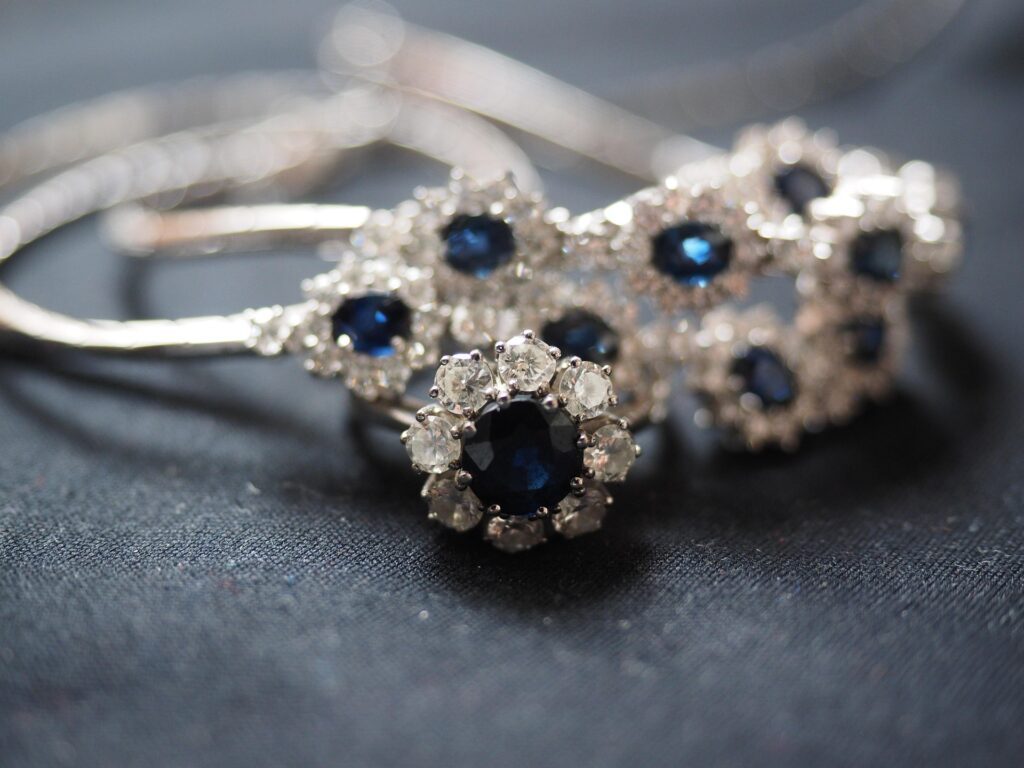Introduction
In a land rich with rituals, heritage, and symbolism, Indian gifting is more than a gesture—it is a cultural expression of love, blessings, and goodwill. Across generations, India has cultivated a deeply rooted tradition of thoughtful gifting, especially during significant life events and festivals. Among the many treasured items exchanged, silver holds a place of reverence and timeless appeal.
Silver is not just a precious metal in Indian tradition; it is a bearer of prosperity, purity, and protection. Whether in the form of a thali for a religious ceremony, a coin given to bless a new marriage, or a delicate anklet for a newborn, silver finds its way into every milestone of Indian life. As both a utility and a symbol, it bridges the spiritual and the celebratory, the practical and the emotional. This blog explores why silver continues to remain at the heart of Indian gifting culture—unchanged by trends, yet always relevant.
1. Historical Significance of Silver in Indian Culture
The legacy of silver in India traces back thousands of years. Ancient texts and scriptures frequently reference the use of silver coins and utensils as symbols of wealth and social status. Kings and emperors of various dynasties stored their wealth in the form of silver bars and coins, often used to reward loyalty or fund religious constructions.
During the Vedic era, silver utensils were associated with purity and were considered suitable for offerings to deities. Archaeological findings reveal that silver was not just currency—it was also integral to everyday life in elite and priestly households.
In the Mughal period, intricately designed silverware was a mark of luxury and sophistication. Silver plates, bowls, and cutlery were used in royal courts, and artisans of the time crafted masterpieces for the nobility. Later, during British colonial rule, the tradition continued with the introduction of western motifs in silver craftsmanship, merging Indo-European design sensibilities.
Today, even with the rise of other materials and digital gifting trends, silver remains embedded in Indian consciousness as a metal of history, luxury, and grace.
2. Religious and Spiritual Relevance
Silver’s association with purity makes it a favored material for use in spiritual and religious settings. From the smallest diya to elaborate pooja thalis, silver objects are central to rituals across Indian faiths. It is believed that silver has cooling properties, making it auspicious and spiritually calming—an ideal medium for sacred purposes.
Festivals like Diwali see a surge in silver gifting—silver coins bearing images of deities such as Lakshmi and Ganesha are popular as they symbolize wealth and new beginnings. During Raksha Bandhan, sisters often receive silver rakhis or coins as tokens of blessing. In Janmashtami, small silver cradles are used to hold idols of baby Krishna, reflecting a tender mix of devotion and tradition.
Temples across India have their own storied use of silver—from the silver doors of sanctums to the intricately designed chariots used in processions. Silver idols and ornaments for deities are lovingly donated by devotees as acts of devotion and gratitude.
Such sacred relevance keeps silver in the heart of every religious household, not merely as an accessory but as an essential part of their spiritual toolkit.
3. Gifting Silver: Occasions and Customs
Silver is deeply woven into the social fabric of Indian celebrations. Whether it’s a birth, a wedding, a new home, or a festival, silver fits seamlessly into every occasion.
Weddings, for example, are incomplete without the exchange of silver gifts. Families often gift silver kalash (vessels), dinner sets, and idols of deities to the bride and groom as symbols of prosperity and protection. Some communities even give silver toe rings (bichhiya) and anklets to the bride, marking marital status with a mix of elegance and spirituality.
For newborns, gifting silver is a time-honored practice. Items like silver rattles, baby feeding spoons, and payals (anklets) are common. Not only are these considered safe and non-toxic due to silver’s antibacterial properties, but they also signify the best wishes of health and abundance for the child.
Housewarming ceremonies are another occasion where silver takes center stage. Silver coconut, lamps, or pooja sets are given to bless the new home with prosperity and peace. During festivals, especially Akshaya Tritiya, it is considered extremely auspicious to buy or gift silver, as the act is believed to bring unending fortune.
These customs have survived the test of time because silver continues to represent something eternal—something that connects generations through meaningful exchanges.
4. Modern Appeal of Silver Gifts
While rooted in tradition, silver gifting has also evolved with the times. Contemporary designers and artisans are now merging classic craftsmanship with modern aesthetics, making silver more accessible and appealing to younger generations.
Today’s consumers seek minimalistic and multifunctional items. As a result, silver gift options now include elegant pen holders, sleek jewelry boxes, wine goblets, customized bookmarks, and designer idols that fit into contemporary décor. These are not only suitable for traditional ceremonies but also ideal for corporate gifting and personal milestones.
Customization has become a significant trend in silver gifting. From engraving names and initials on silver coins to creating family crests on silver trays, personalization adds emotional depth and exclusivity to gifts.
Moreover, silver is increasingly being chosen as an eco-conscious option. Unlike plastic or synthetic gift items, silver is durable, recyclable, and sustainable. In a world shifting toward responsible consumerism, silver stands out as a noble and eco-friendly choice.
Thus, silver gifts have not only retained their charm but have adapted beautifully to suit modern preferences.
5. Symbolism and Sentiment Behind Gifting Silver
More than its monetary value, silver carries emotional and symbolic weight. When someone gifts silver, they are not merely offering a metal—they are expressing a wish for longevity, health, purity, and prosperity.
Silver often becomes an heirloom, passed down through generations as a treasured legacy. A silver bowl gifted to a newborn may be used for his own child someday. An intricately carved silver lamp presented during a wedding may find its place on the family altar decades later. These objects become vessels of memory, emotion, and continuity.
In times of joy or transition—like births, weddings, retirements, or housewarmings—silver serves as a beautiful constant. It bridges the past and future, embodying continuity, blessings, and sacred values.
In a culture as emotionally rich as India’s, silver is more than a gift. It is a heartfelt expression, a symbol of goodwill, and a reminder that some things—like tradition—are truly timeless.
6. Choosing the Right Silver Gift: A Practical Guide
When selecting silver gifts, a few key considerations can enhance the value and meaning of the offering.
Understand the types of silver:
- Pure silver (99.9%) is soft and best suited for coins and idols.
- Sterling silver (92.5%) is mixed with alloys for durability, ideal for utensils and jewelry.
- German silver is a nickel-based alloy and contains no real silver—it’s attractive but not precious.
Check for hallmarking:
Look for BIS (Bureau of Indian Standards) certification or other hallmark stamps that confirm the purity of silver. This ensures the authenticity and value of your gift.
Match the gift with the occasion:
- For religious ceremonies, go for pooja thalis, kalash, or idols.
- For weddings, silver utensils, coin sets, or decorative home items are ideal.
- For newborns, opt for silver bowls, spoons, or anklets.
- For corporate or personal gifts, sleek accessories or utility items work well.
Don’t forget care instructions:
Silver tarnishes over time when exposed to air and moisture. Encourage recipients to clean their silver regularly using mild cleansers or soft cloths, and store items in anti-tarnish bags.
With the right knowledge, a silver gift becomes not only a beautiful object but a truly meaningful keepsake.
Conclusion
In a world of fleeting trends and digital tokens, silver stands as a powerful symbol of tradition, continuity, and emotion. Its presence in Indian culture is not accidental but born from centuries of reverence and practicality. Silver speaks a universal language—of purity, blessings, and timeless beauty.
Whether gifted during a grand wedding or a quiet housewarming, silver brings with it a grace and sentiment that no other material quite matches. As design evolves and preferences change, silver effortlessly adapts while retaining its essence. It is a reminder that in gifting, it’s not just the object but the meaning behind it that truly matters.
So the next time you choose to celebrate a loved one’s milestone or mark a sacred moment, consider silver—not for its shine alone, but for the generations of stories it carries within.

